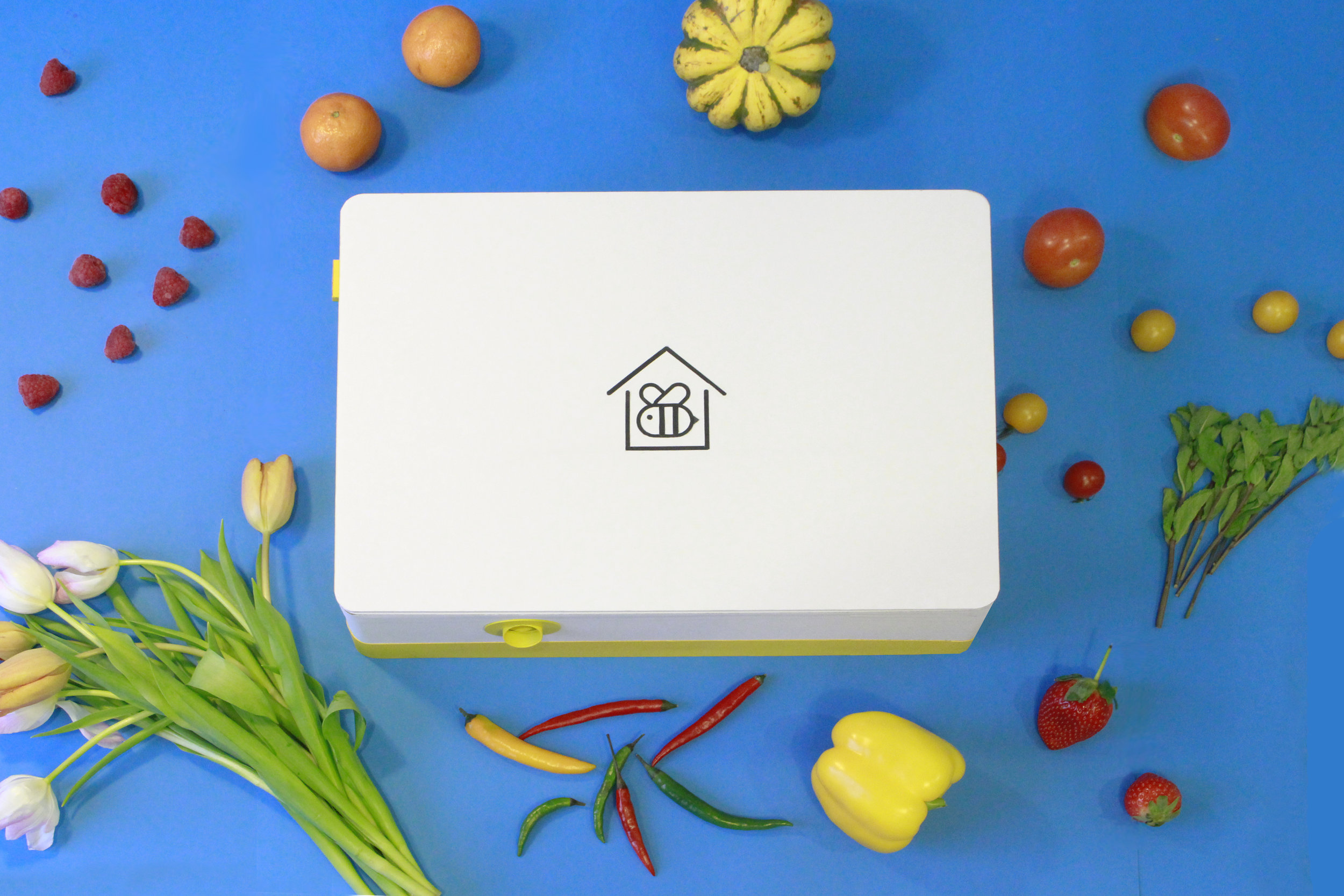Pet Bee
Product Design / Technology / Agriculture
Future Pollinators
Production, land use & deforestation contributes up to 33% of climate change. By 2050, human population is predicted to rise to 9.8 billion and to feed this growing population, food production will need to rise 70%. With bees being responsible for 1/3 of the world’s food supply, PetBee is committed to promoting and preserving bumblebees as a pollinator by providing colonies a sustainable urban environment to nest.
A Study on Bumblebees
While honey bees are widely used as pollinators, bumblebees are 2-4 times more effective. They are independent pollinators, localized, and have no flower discrimination, working on cold and rainy days. Their fluffy coats and buzz pollination helps them pick up twice as much pollen and release it quickly. Most nest underground in abandoned mouse holes. While they are effective pollinators, 1/2 of the population of bumblebees in Europe are declining.
Pet Bee
We found that a large amount of existing bumblebee nests are DIY projects. Acknowledging the importance and efficiency of bumblebees, we created Pet Bee, the first smart bumblebee nest. The design of Pet Bee is inspired by elements of bumblebee’s natural habitat. Inspired by CERN CLOUD. various sensors regulate internal temperature, humidity and monitors bumblebee colony.
Components
A bright yellow entrance is used to attract new queen bumblebees. As bumblebees cannot see red, the red pane allows owners to observe the colony but not disturb them.
Interior
A descending tunnel mimics bumblebee nests in nature. Each nest is kept at 30C and 60% humidity, the optimal temperature to boost bumblebee colony development.
Data Collection
Data collected is analyzed to optimize living conditions and increase future yield of bumblebees in various climates.
Application
Pet Bee’s influence extends from home, community to industry. With bumblebee foraging range at around 200m, each Pet Bee colony can cover up to 400m of land. Together, not only can we increase nesting sites for bumblebees, but also raise awareness of their importance and increase urban diversity.
Home
At home, Pet Bee benefits you and your neighbor’s garden pollinating your plants. A hydroponic plant box can be added on to provide an immediate food source for bumblebees and daily produce for families.
School
At School, Pet Bee can be used as an education tool to learn about bumblebee biology and lifecycle.
Community
We see our product integrating into initiative such as Greater London National Park, London Beekeepers Association and Urban Growth London, which all aim to boost biodiversity in cities.
Pet Bee OS
Acknowledging that most bumblebee nests are DIY projects. We hope to expand the influence of Pet Bee by incorporating an open source platform, Pet Bee OS. This includes a downloadable guide on starting a bumblebee nest and colony to an essential kit allowing people to adapt Pet Bee to your own DIY nests. A series of parts can also be downloaded to supplement your building process.
Vertical Farming
On an industrial scale, PetBee explores the cohabitation of bumblebee colonies and hydroponic vertical farming practice. This practice optimizes space in urban areas, does not use pesticides, and also yield a larger quantity of crops. As population of bumblebees rise, we plan to distribute new queen bees to supply future Pet Bee, agriculture use, and areas with low bumblebee population.


















